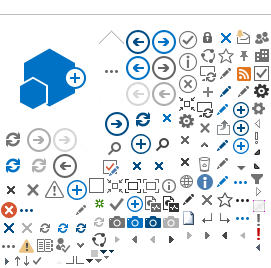Alerts about high-risk clinical situations
Alerts in SafeScript NSW will be displayed where a high-risk situation has been detected in an individual's record. Alerts will be red or amber, depending on the severity of the risk. Red alerts will trigger a red pop-up notification to be sent to prescribers or pharmacists using integrated clinical software.
Concurrent prescribing
 Alert Colour - Red
Alert Colour - Red
Alert Rules
Concurrent prescribing of potentially harmful medicines in a 30-day period
- Combination Rule 1 - Fentanyl + a long acting opioid*
- Combination Rule 2 - Fentanyl + a benzodiazepine / zopiclone or zolpidem
- Combination Rule 3 - Methadone (pain products) + a long acting opioid*
- Combination Rule 4 - Methadone (pain products) + a benzodiazepine / zopiclone or zolpidem
Does the alert trigger a pop-up notification?
Yes, a pop-up notification is sent
*excluding medicines on the opioid treatment program
Opioid Dose Threshold
 Alert Colour - Red
Alert Colour - Red
Alert Rules
Opioid Dose Threshold - where an individual has an average daily opioid dose of more than 100mg per day, averaged over a 90-day period*.
Does the alert trigger a pop-up notification?
Yes, a pop-up notification is sent
*excluding medicines on the opioid treatment program
Multiple Prescribers
 Alert Colour - Red
Alert Colour - Red
Alert Rules
Multiple Prescriber Episode - this is where an individual has received a prescription for any monitored medicine from 4 or more prescribers across 4 or more medical practices in a 90-day period.
Does the alert trigger a pop-up notification?
Yes, a pop-up notification is sent
Multiple Pharmacists
 Alert Colour - Orange
Alert Colour - Orange
Alert Rules
Multiple Pharmacist Episode - where an individual has had any monitored medicine dispensed in 4 or more pharmacies within a 90-day period.
Does the alert trigger a pop-up notification?
No, a pop-up notification will not be sent about this alert. Information about the alert will be available in SafeScript NSW.
Clinical decision making remains with the health practitioner
A notification or alert does not mean prescribers and pharmacists are not allowed to prescribe or dispense a medicine; it indicates that some clinical risk with the use of monitored medicines has been identified. Steps should be taken to review and manage appropriately. Ultimately, the clinical decision remains with the prescriber or pharmacist to determine whether the medicines prescribed continue to be the safest and best option for the patient's individual needs.
Prescribing or dispensing monitored medicines if a warning is received in the system
Prescribers and pharmacists may still prescribe and dispense monitored medicines with a notification or alert if they believe it is clinically safe and appropriate to do so. The SafeScript NSW system provides health practitioners with improved quality of information at the point of care that is intended to aid clinical decision making and ensure appropriate use of monitored medicines.
If deciding that a medicine is no longer the safest treatment, it is important to remember good clinical practice involves ensuring that appropriate continuity of care is provided for the patient. Abruptly discharging the patient or suddenly stopping the treatment of patients who have been taking high-risk medicines over a long period of time is contrary to patient safety.
